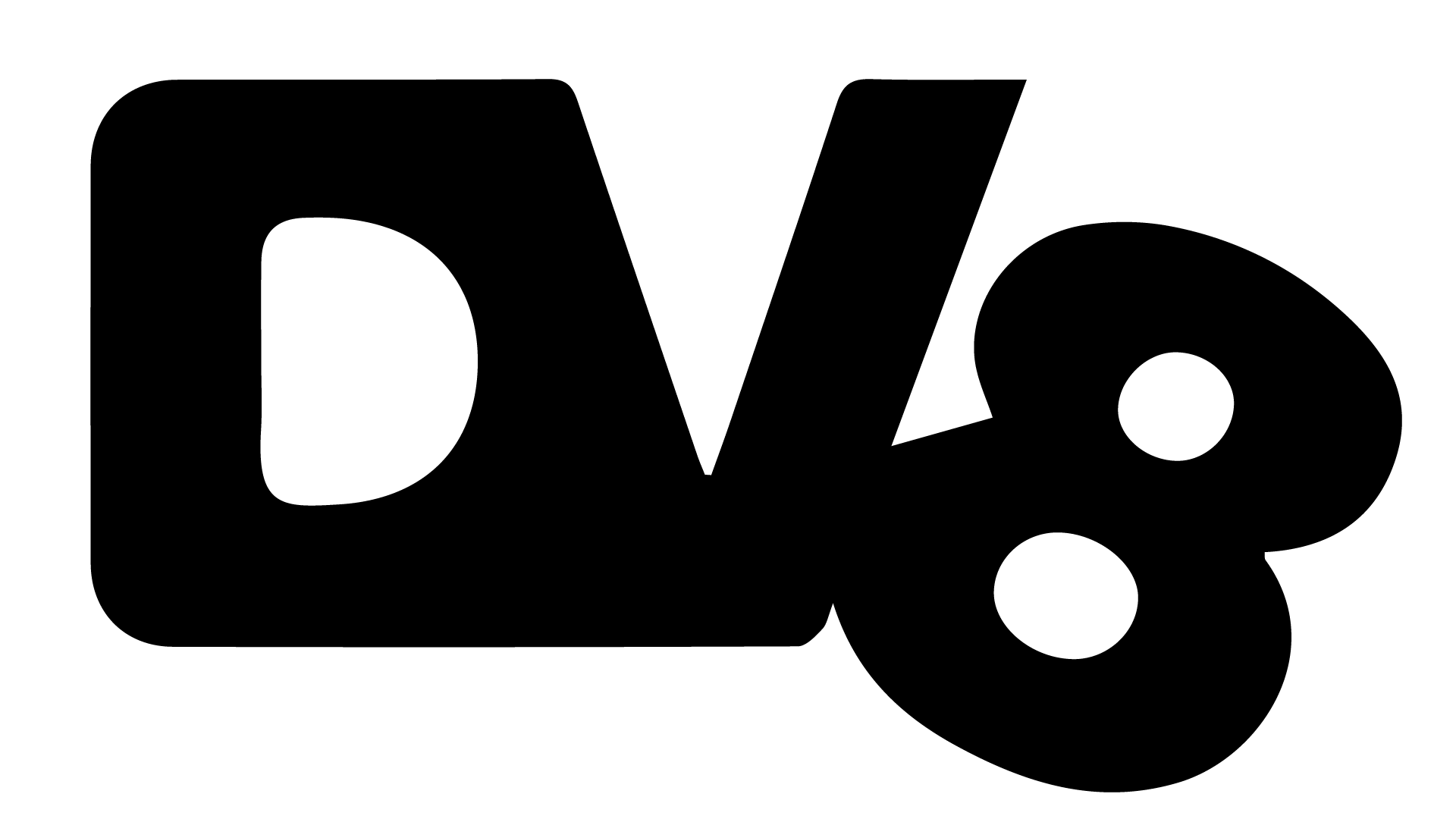Solution
Driven
Design
DV8.agency

Phase 1: Establishing a Strong Foundation
When your business is new or in its early stages, the primary goal is to establish a strong online presence. This phase focuses on building your brand’s foundation, developing core content, and setting up the right tools to manage it all.
1. Define Your Brand Identity and Target Audience
Your brand identity and target audience are the bedrock of your digital marketing strategy. Having a clear, consistent brand and knowing who you’re speaking to will guide every other decision.
- Define your brand’s mission, values, and unique selling propositions (USPs).
- Create brand guidelines that include your logo, color palette, fonts, and tone of voice.
- Research and outline your target audience, focusing on demographics, psychographics, needs, and challenges.
- Develop customer personas based on this research to guide content and messaging.
2. Build a High-Quality Website
A website is the digital storefront for your brand and often the first impression for potential customers. Make it engaging, easy to navigate, and optimized for search engines.
- Choose a reliable content management system (CMS) such as WordPress, Shopify, or Squarespace, depending on your business needs.
- Ensure your website has a clean, mobile-responsive design, as more users are browsing on mobile devices.
- Integrate SEO basics by optimizing page titles, meta descriptions, headers, and image alt tags to help search engines understand your site.
- Include essential pages like Home, About, Services/Products, Contact, and a Blog or Resource section.
3. Develop a Content Strategy and Begin Creating Core Content
Content is crucial in establishing authority and engaging your audience. Early on, focus on creating foundational content that addresses the questions and needs of your target audience.
- Research key topics in your industry that align with your audience’s interests and pain points.
- Prioritize content that educates and informs, such as “How-to” guides, beginner tips, and industry insights.
- Set a content calendar that ensures a steady flow of posts across platforms (e.g., a blog post once a week, daily social media posts).
- Repurpose content across different formats (like turning a blog post into a video or infographic) to maximize reach.
4. Establish a Social Media Presence
Your social media platforms are a direct line to your audience and essential for brand awareness and engagement. Start with the channels most relevant to your audience, such as Instagram, Facebook, LinkedIn, or Twitter.
- Choose 2–3 platforms based on where your target audience is most active.
- Create a social media plan with consistent posting and engagement, using a mix of content types like educational posts, product highlights, and user-generated content.
- Use social media management tools (like Hootsuite or Buffer) to schedule posts in advance and analyze performance.
- Engage with followers by responding to comments, participating in relevant discussions, and following key industry hashtags.
Phase 2: Growth and Optimization (For Businesses with an Established Online Presence)
Once you have a solid foundation, the next focus is on optimizing performance, expanding reach, and boosting engagement. This phase involves deeper targeting and using analytics to refine your approach.
5. Optimize SEO and Expand Content Reach
With a content foundation in place, focus on optimizing for search and expanding content to cover broader and more specific topics. SEO efforts help increase organic traffic and reach new audiences.
- Conduct keyword research to identify high-value keywords related to your industry and customer queries.
- Update existing content with optimized keywords, meta descriptions, internal links, and backlinks to improve rankings.
- Explore additional content formats such as video tutorials, podcasts, or webinars to diversify content offerings.
- Use SEO tools like Google Analytics and Google Search Console to track performance and adjust based on metrics such as bounce rate, time on page, and click-through rates.
6. Implement Email Marketing
Email marketing allows you to nurture leads, keep existing customers engaged, and drive conversions. It’s a powerful tool for re-engagement and retargeting.
- Use an email marketing platform like Mailchimp, ConvertKit, or ActiveCampaign to manage subscriber lists and automate campaigns.
- Create segmented email lists based on customer behavior or preferences to deliver personalized content.
- Plan automated email sequences, like a welcome series for new subscribers or re-engagement campaigns for inactive users.
- Regularly analyze open rates, click-through rates, and conversions to optimize campaigns and improve engagement.
7. Invest in Paid Advertising (PPC and Social Media Ads)
Paid ads can accelerate growth by driving targeted traffic to your website, generating leads, and boosting brand visibility. This approach is especially useful for established brands ready to expand quickly.
- Start with paid search ads on Google or Bing for highly targeted, intent-based traffic.
- Use social media ads on platforms like Facebook, Instagram, or LinkedIn to reach new segments based on demographics, behaviors, or interests.
- Set clear campaign objectives (e.g., lead generation, website traffic, or conversions) and monitor metrics closely to manage ad spend effectively.
- Utilize A/B testing for ad copy, visuals, and targeting settings to determine which elements resonate best with your audience.
Phase 3: Scaling Up and Refinement (For Growing and Established Brands)
As your brand matures, the focus should shift to optimizing ROI, enhancing customer experience, and expanding into new channels or strategies for greater impact.
8. Leverage Advanced Analytics for Data-Driven Decisions
With a significant customer base and content ecosystem, advanced analytics can reveal insights that help fine-tune your strategy. Understanding which channels drive the best results allows you to allocate resources more effectively.
- Use analytics platforms such as Google Analytics, SEMrush, or HubSpot to track detailed metrics across channels.
- Analyze customer journey data to identify which paths lead to conversions and where there are opportunities for improvement.
- Conduct cohort analyses and segment customers based on behaviors like purchase frequency or engagement levels, allowing for highly targeted messaging.
- Regularly refine strategies based on insights, focusing on the highest-converting channels, content types, and user segments.
9. Focus on Customer Retention and Loyalty
For established brands, retaining customers is often more cost-effective than acquiring new ones. Developing a customer loyalty program helps increase lifetime value and encourages repeat purchases.
- Develop a loyalty or rewards program that incentivizes repeat purchases, such as offering discounts or exclusive access to new products for members.
- Create personalized re-engagement campaigns based on purchase history, sending offers or recommendations tailored to each customer’s interests.
- Use a CRM (like Salesforce, Zoho, or HubSpot) to track customer data, monitor purchase patterns, and deliver targeted retention efforts.
- Implement referral programs that encourage satisfied customers to share your brand with their networks.
10. Expand with Advanced Strategies: Influencer Marketing, Partnerships, and Content Syndication
As your brand reaches a stable growth phase, exploring advanced digital marketing strategies can open up new opportunities and reach untapped audiences.
- Identify relevant influencers in your industry and develop partnerships to promote your brand on social media, leveraging their reach and credibility.
- Form strategic partnerships with complementary businesses to cross-promote products, expanding your customer base with minimal cost.
- Syndicate your best content to other platforms or industry websites, such as guest blogging, contributing to reputable publications, or sharing videos on YouTube to reach new audiences.
- Track the results of these initiatives closely to evaluate ROI and focus on the channels and partnerships that yield the most significant returns.
A successful digital marketing strategy evolves alongside your business, progressing from foundational efforts to more advanced tactics. By aligning your approach with your business’s growth stage—whether that’s establishing your brand, scaling up, or refining for optimal ROI—you’ll create a more effective, results-driven digital marketing presence.


